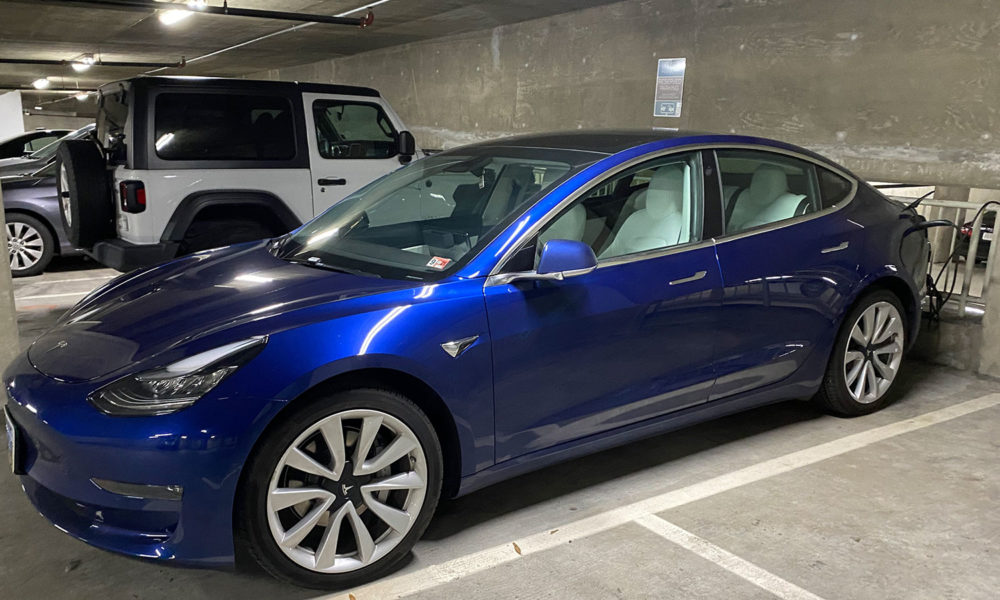Over the last few years, my work on electric vehicle (EV) charging infrastructure has focused, almost exclusively, on state-level policies and regulations. Only occasional federal bills that aimed to increase access to charging came across my desk. But now there’s a new Congress and a new administration giving new life to the possibilities to increase access to EV charging and enable more EV adoption—the kind of accelerated adoption that could put the US on track to achieve 100 percent EV sales by 2035 and significant progress on climate emission reductions. So my UCS colleagues and I have been thinking more deeply about federal policies, and I penned a new fact sheet, Federal Support for EV Charging: Policies for Rapid, Equitable Investments, to communicate a number of considerations and conclusions about policy for charging infrastructure.
The new fact sheet considers EV drivers in a variety of types of housing and charging access circumstances, including multi-unit dwellings and single-family homes as well as renters and homeowners. For example, the photo above is an EV that parks in my apartment building’s parking garage. This driver runs the power cord from the back of the EV over the railing to the nearest regular wall outlet in the garage. There are many Level 2 chargers and even a handful of direct current (DC) fast chargers in parking garages nearby—many of which charge for parking in addition to any charges for electricity—but there are no Level 2 or DC fast chargers in ours. Using the regular wall outlet, which gives a Level 1 charge, at home where the car is parked for long stretches of time works for most of my neighbor’s routine driving. It’s certainly better than having no access to charging at home. (And I don’t even mind that I’m paying for part of this EV’s charging as my share of the common space meter because I love seeing EVs around so much.) Even so, I can’t help but imagine how many more of my neighbors, and apartment dwellers in general, would adopt an EV if they had better access to charging at home.
The car in the photo below is also an EV. That one belongs to a driver in a single-family home just under a mile from where I live. The driver in this instance does not have a garage but does have an off-street parking spot and was able to install a Level 2 charger right on the side of the house. That is not to say that installing charging at a single-family home is always a given, even if that home has dedicated parking. A renter’s interest in charging may not align with the interests or budget of the landlord, or a low-income homeowner may not be able to afford the up-front cost of the charger.

These challenges are the reason we need policies at all levels that promote charging deployment to enable EV adoption for consumers whose mobility needs are best met by a car in order electrify the consumer vehicle fleet and achieve reductions in climate-warming emissions in the transportation sector. The federal government has an important role to advance such policies. To get a full description of the barriers that can be addressed at the federal level and policies to address those barriers, you can check out the new UCS fact sheet.
That fact sheet describes how federal policies should be designed to fill information gaps, assist drivers and locations that host charging stations in paying for the upfront costs of charging, and align the interests of drivers and the hosts of charging sites. Across policies, the federal government should emphasize increasing access to EV charging for renters, residents of multi-unit dwellings, and drivers who cannot install home charging.
To fill information gaps, we need research. Research at the federal level should include the classic R&D to refine technologies and bring costs down, and it should involve collecting and sharing best practices for deploying accessible infrastructure and providing comprehensible resources to bring drivers, landlords, and other charging site hosts up to speed on technologies and installation. Research should also include community needs and regional travel needs assessments that can feed into infrastructure planning that emphasizes those who are underserved by current charging deployment.
Financial incentives can help overcome the upfront cost of charging infrastructure and help to align the interests of drivers and charging site hosts. Those incentives can come in the form of a tax credit or grant. Financing is another important element to addressing up-front costs, and for public charging, federal policies can encourage investment through favorable bonding opportunities.
Building codes are another opportunity to align incentives between drivers and charging site hosts. If the installation of infrastructure is required, then both driver and property manager benefit from the investment. Plus, installing infrastructure in a new building or during a major renovation costs less than the cost to retrofit an existing building. The federal government can lead by example on EV readiness by mandating the phase-in of charging infrastructure deployment at parking facilities owned or managed by the federal government and at public lands.
Together these federal policies can go a long way in supporting EV charging deployment to accelerate the transition to an electrified future.

